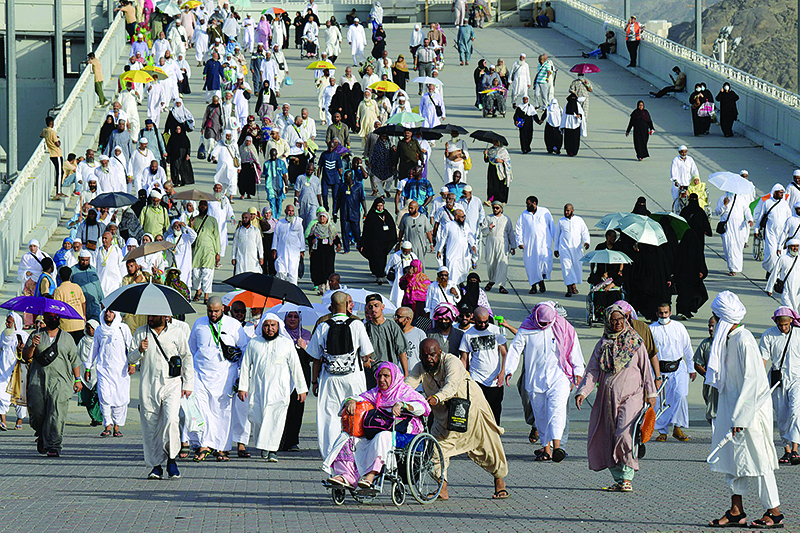

MINA: The hajjpilgrimage underway in Makkah has been accelerating the growth of digitalworship and spawning a slew of religious apps, tablet Qurans and faith-basedgadgets. At the peak of Mount Arafat, numerous Muslim pilgrims were absorbed inQuranic verses displayed on their smartphones - rapidly replacing traditionalprinted holy books.
"Of course Iread the Quran on my phone... it's much more simple," said Egyptianteacher Ahmad Salim, 46, who had travelled to Saudi Arabia for the hajj, one ofIslam's five pillars. For the first time in the hajj's history, 5G superhigh-speed mobile technology has been deployed around the holy sites to allowthe faithful to transfer data at breakneck speeds. Tech giants Zain and Nokiawill even "demonstrate advanced virtual reality... allowing users toexperience the hajj remotely as if they were there", using 360 degreehigh-definition video over 5G.
'A success'
Many pilgrimssnapped selfies over the five-day rite, held this year August 9 to 14, and sentvideo clips to friends and family back home. Almost 2.5 million Muslims havetravelled to Makkah in western Saudi Arabia, closed to non-Muslims, for thereligious gathering, which is one of the world's largest and most logisticallycomplex. The hajj has taken on an increasingly high-tech dimension in recentyears with the emergence of mobile phone apps designed to help pilgrims fromaround the world navigate their experience.
Software existsto help visitors get around Makkah and the surrounding area as well as accessmedical services and properly follow religious rites. Saudi's hajj ministryeven sends text messages to pilgrims with a variety of information and advice.A major digital innovation for this year's hajj has been the introduction ofelectronic hajj visas "delivered online for the first time withoutnecessitating a consulate visit. It's been a success," said hajj ministryofficial Hassan Qadi.
'It's veryuseful'
"It's verypractical, especially for those travelling with family," said JordanianAbderrahman Shdaifat, 44, making his first hajj. The authorities have alsoincreasingly turned to technology to improve the hajj experience and avoidincidents like the stampede that claimed some 2,300 lives in 2015.
In the wake ofthat tragedy, pilgrims are now issued with electronic bracelets containingtheir personal data. "All of their information is loaded, a bit like an IDcard. If you can't read or write and you get lost, you can give it to anyoneand they can help you find your address. Technology helps ease the hajj,"said Sami Abdelaziz, a 37-year-old Saudi pilgrim. Shdaifat, the Jordanianpilgrim, sheltering under an umbrella from the heavy rains that have lashed theMina Valley outside Makkah, said of the bracelets: "If a pilgrim getsseparated, their group can locate them.
"It's veryuseful." Saudi authorities have also fitted GPS trackers to 18,000 shuttlebuses to monitor the flow of pilgrims. Shdaifat brandished a second braceletthat gives him access to the metro system connecting Makkah's variouspilgrimage sites. Classic watches and alarm clocks are also losing ground tophone-based tools that alert worshippers to their five daily prayers."Nearly all the pilgrims have it," said Egyptian Ahmad Salim.- AFP

